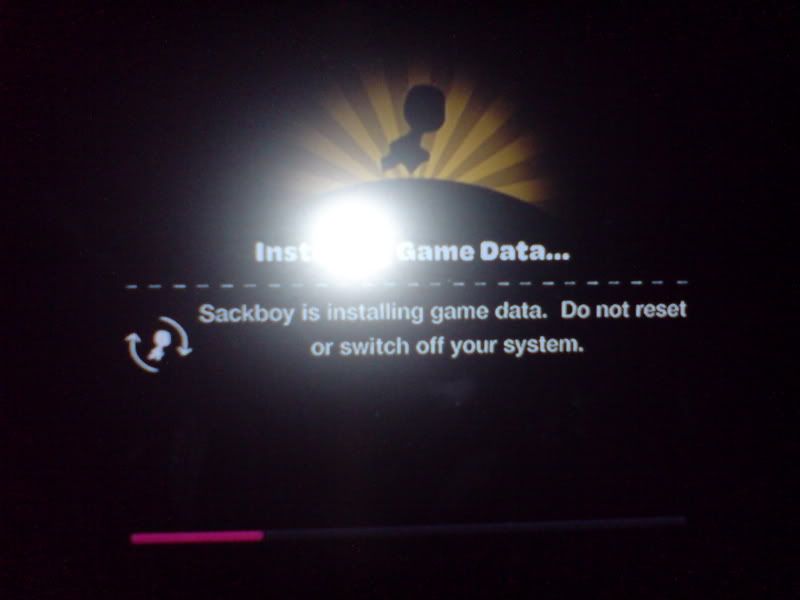
Backstory
Some loading screens give the player something to read while waiting. It is usually a few sentences (sometimes they change as the loading continues) which fills the player in on the games backstory. This is fairly common place since it takes almost no work from the game designers and is a lot better than a blank loading screen. Things that might not naturally come up during gameplay can be read here.
Hidden Loading
Probably the best kind of loading and one that should be used more often. Rather than taking the player out of the game at all, loading can be hidden within the game. For example say the player needs to get from one level to another. Rather than stopping the game, the levels can be joined by a small tunnel that the player must run across. The tunnel is simple but still fits into the game design. While the player is running across the tunnel the level on the other side is loading. This exact situation is used in the Castlevania games, and during vehicle sequences in Half Life 2.
 Castlevania Symphony of the Night was a large game with many diverse sections of the castle to explore freely. Rather than freeze the game between areas, each section of the castle was joined by a tunnel. The time it took to run through the tunnel was the time it took to load the area.
Castlevania Symphony of the Night was a large game with many diverse sections of the castle to explore freely. Rather than freeze the game between areas, each section of the castle was joined by a tunnel. The time it took to run through the tunnel was the time it took to load the area.
Resident Evil has the best hidden loading out of all the games. Not only did it not take the player out of the game but added to the atmosphere. Resident Evil was a very scary game for its time. The player never knew what was behind a door. The loading screen was replaced by a door slowly opening, or walking down/up stairs adding to the suspense the player felt.
Mass Effect took some criticism by having its loading hidden in elevators. Personally I liked this touch. Not only was the loading more visually appealing (looking at 3d models of your characters) but the elevator played news radio and you could hear how your mission was affecting the world around you. Or like in these clips your characters talked with one another.
Special Mention
There is one final type of loading that is very rarely used. Ridge Racer had the player playing a level of the classic Galaxian while waiting for the game to load. One of the reasons more games do not have a second game during the loading sequence is that it would take too much work. Namco, the developer and publisher of the game, already owned the rights to Galaxian so it took no work to put it in the loading screen. Furthermore Galaxian is a fairly small game and it can be run over top of a loading screen with ease. If a game is too complex, the loading game would need its own loading screen. Not many developers have a back catalogue of simple fast games like Namco and developers do not want to spend time creating their own sub game for the loading screen when work could be better spent elsewhere. However, the Galaxian loading screen is still remembered by many.
Loading is a challange in which the developers must make lemonaid out of their lemons. Anyone can just throw a "now loading..." text on the screen but it takes a little extra thinking and care to turn waiting for the game to load into something more bearable and sometimes a welcome addition to the game.
I like the idea of having hidden load games. It gives a break in the action but the player is still captured within the game. Besides, I think it's more realistic too. Real life doesn't have action 24/7, there are slow periods and that's when the loading can take place.
ReplyDeleteRohit
Btw just to clarify, I was talking about hidden loading in games like walking through tunnels in Castlevania
ReplyDeleteRohit
Thats a good point. Loading can also help break up the action a bit. I know there have been many times when I have just finished a large level and boss battle and am thankful for a short load before the next part of the game starts.
ReplyDelete